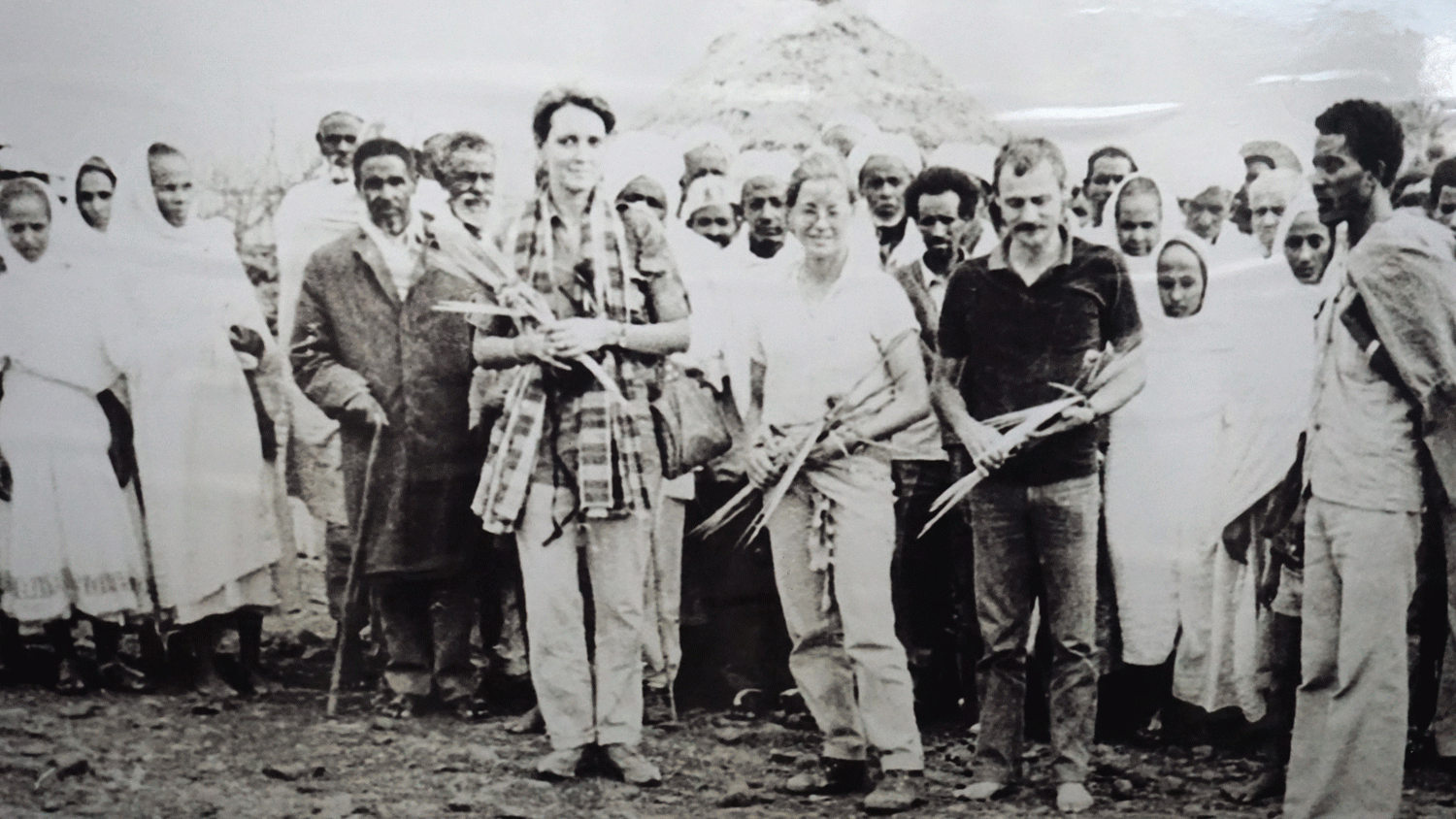
Everywhere and Anywhere

More than 326,000 people call Dadaab home, but the vast sea of tents in the Kenyan desert is really the opposite. It’s the world’s largest refugee camp, and its occupants, mostly Somalians, must eventually return whence they fled or find a more hospitable place to take them in.
Gayle Smith (Engl’78), head of the U.S. Agency for International Development (USAID), has been visiting places like it for decades.
“People come away from a refugee camp with two thoughts oftentimes,” she said in an interview in her Washington office, a few blocks from the White House. “One is a level of shock. They imagine what it would mean if we suddenly had to live in a field with a blue tarp and just wait. You’ll talk to a lot of people who are despairing, but you’ll talk to as many people who, if we can help get them back home or help them where they are now, are pretty resilient. I think that’s sometimes missed. On one level you think ‘this is horrible,’ on another level you walk away saying, ‘Those are some of the most courageous, strongest, amazing people I’ve ever met.’”
USAID is the federal agency charged with international development — helping people outside the U.S. improve basic local living conditions and recover from catastrophe, including mass violence, natural disasters, extreme poverty, famine and disease.
Smith — nominated by President Obama to run the agency and confirmed by the Senate — took charge last year amid unprecedented demand for its expertise and resources.
In June, the United Nations reported that, for the first time in history, the number of people displaced from their homes due to conflict and persecution alone exceeded 60 million.
“We respond to pretty much every humanitarian crisis on the planet,” said Smith, 60. “There are the really big ones that get the world’s attention. Those range from Syria to the Ebola epidemic to the earthquake in Nepal. Then there are the smaller ones, like a local food emergency in one small part of a small country. What’s happening today is that there are more crises at the same time. Many of them are more complex than some in the past, and they’re chronic — they’re lasting longer.”
She speaks from experience.
“We respond to pretty much every humanitarian crisis on the planet,” said USAID’s Gayle Smith (center left) seen here early in her career.
After CU, Smith spent 20 years as a journalist reporting from Africa, then joined the National Security Council (NSC) during the Clinton Administration, focusing on African affairs. She consulted for the World Bank and UNICEF and held high-level USAID positions. She’d rejoined the NSC when Obama nominated her for USAID’s top job.
“Gayle’s energy and passion have been instrumental in guiding America’s international development policy, responding to a record number of humanitarian crises worldwide, and ensuring that development remains at the forefront of the national security agenda at a time when USAID is more indispensable than ever,” the president said then.
Sworn in on Dec. 2, Smith assumed leadership of nearly 10,000 employees in 100 countries, many of them volatile and dangerous.
She grew up in Columbus, Ohio. Math had always been a strength, but she majored in English at CU and eventually became a journalist. While traveling in Greece and Egypt after graduation she grew interested in international issues.
“The more I saw, the more questions I had,” she said, “and the more I wanted to go chase down the answers.”
For the next two decades she hopscotched across Africa, reporting on wars, famines, refugees and other issues as a freelancer. In the early 1990s she was approached by Clinton’s transition team and served as senior director for African affairs at the NSC and as senior advisor to the administrator and chief of staff of USAID.
It’s a sunny but not particularly muggy June day in Washington six months into Smith’s tenure as USAID chief. She’s sitting in her office on the sixth floor of the Ronald Reagan Building and International Trade Center, a gleaming modern edifice set among neoclassical buildings along Pennsylvania Avenue. A cherished photo of her late parents taken in Nova Scotia rests on an end table. Instead of a nameplate on her desk, two signs face visitors. One says “Girl Boss,” the other “LuGyiMaMa,” which means the same in Burmese.
The more I saw, the more questions I had.
Smith had recently returned from Turkey, where she dropped in on a USAID Disaster Assistance Response Team (DART) charged, in part, with helping manage the epic refugee exodus from Syria. DARTs are the agency’s first unit of response when catastrophe strikes and typically include experts in logistics, nutrition, water, sanitation, hygiene, emergency shelter, plus military advisors.
Historically, USAID has dispatched a few DART teams every year, but the number has been rising. Working on the ground with the United Nations and other aid organizations, they can move money and import supplies quickly.
“We are the world’s leading donor to humanitarian crises, and we are almost every time the first and the fastest to respond, whether it’s a war, an earthquake, or some other epidemic,” she says.
There’s plenty of work ahead for USAID. Kenya has announced it intends to close Dadaab. Civil war rages in Syria. Typhoons, drought and, alas, armed conflicts, are inevitable.
When they happen, Smith believes people remember those who are there to lend a helping hand: “I have found that everywhere I travel, regular people, regardless of the politics of the day, remember that it’s America that stands up.”
Top photo: © Thomas Trutsche/Getty Images; Above: Courtesy Gayle Smith

